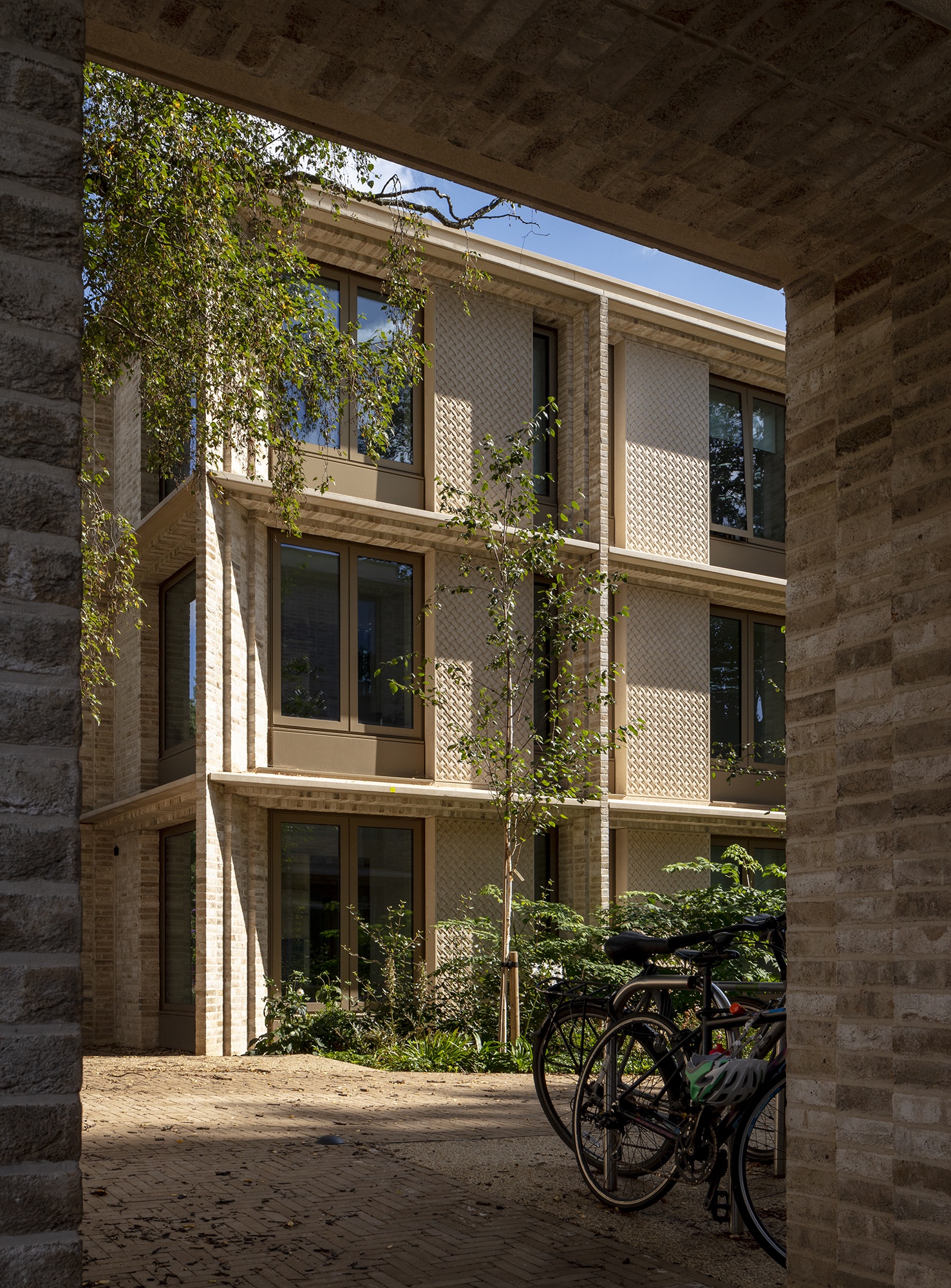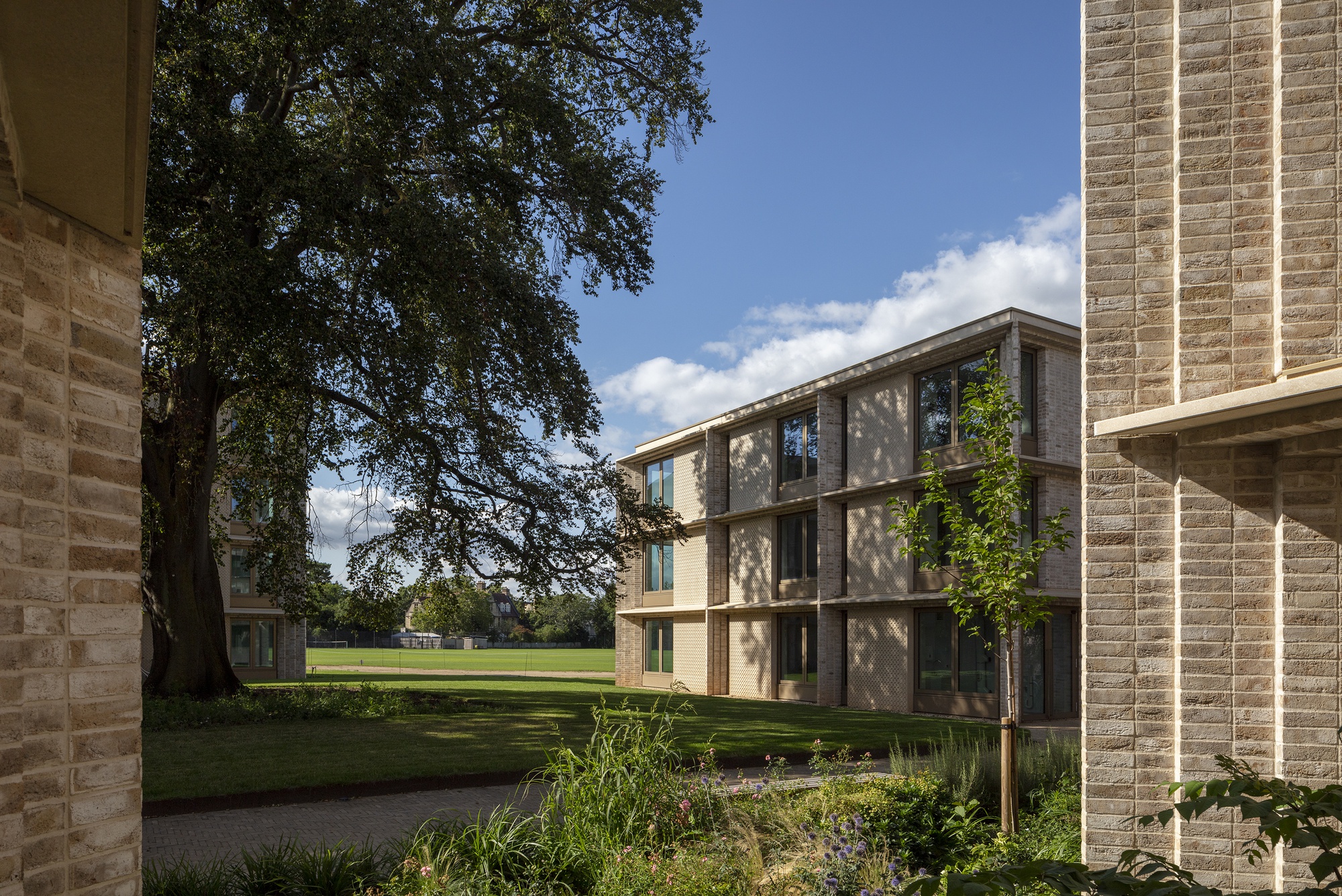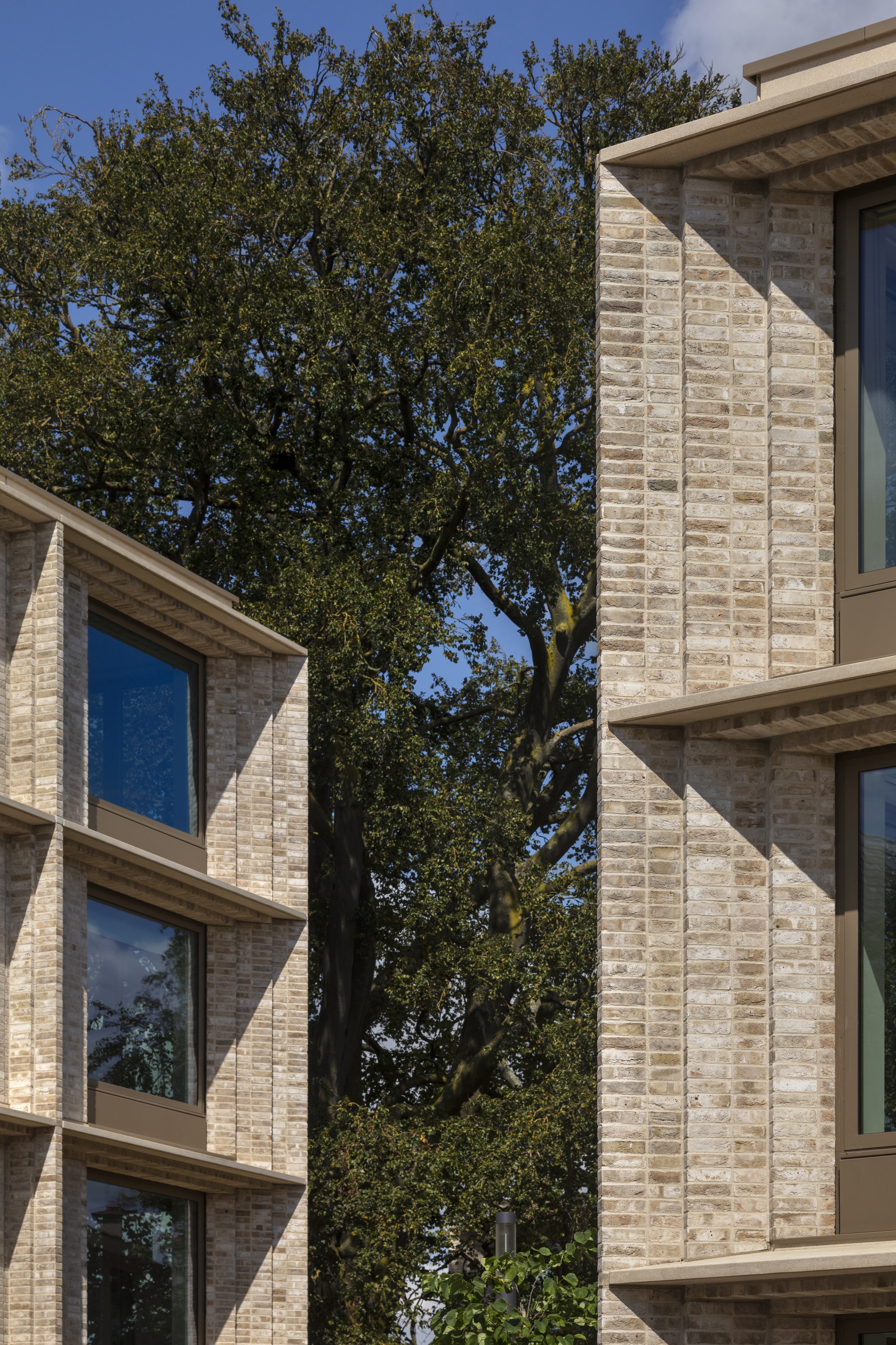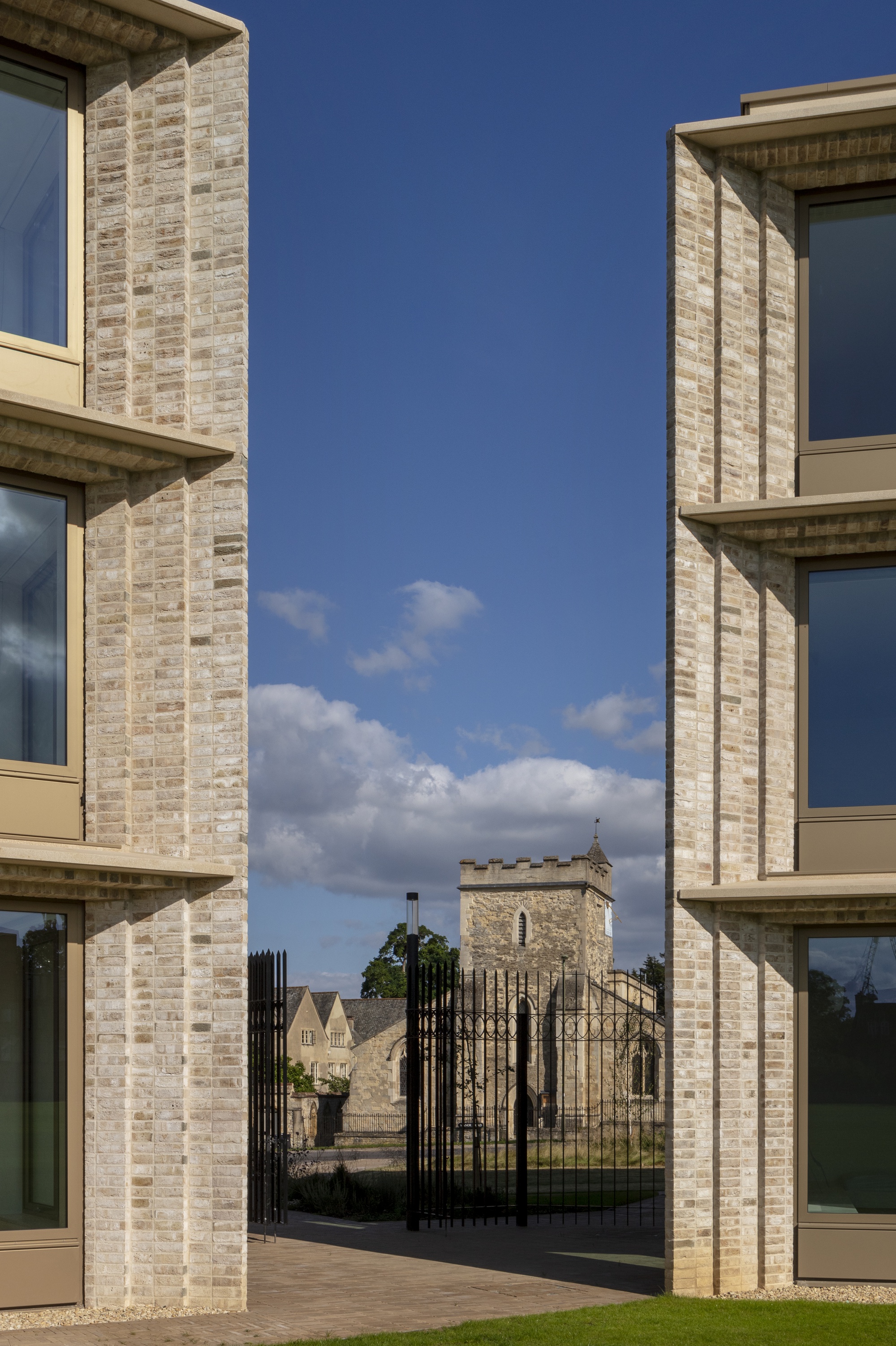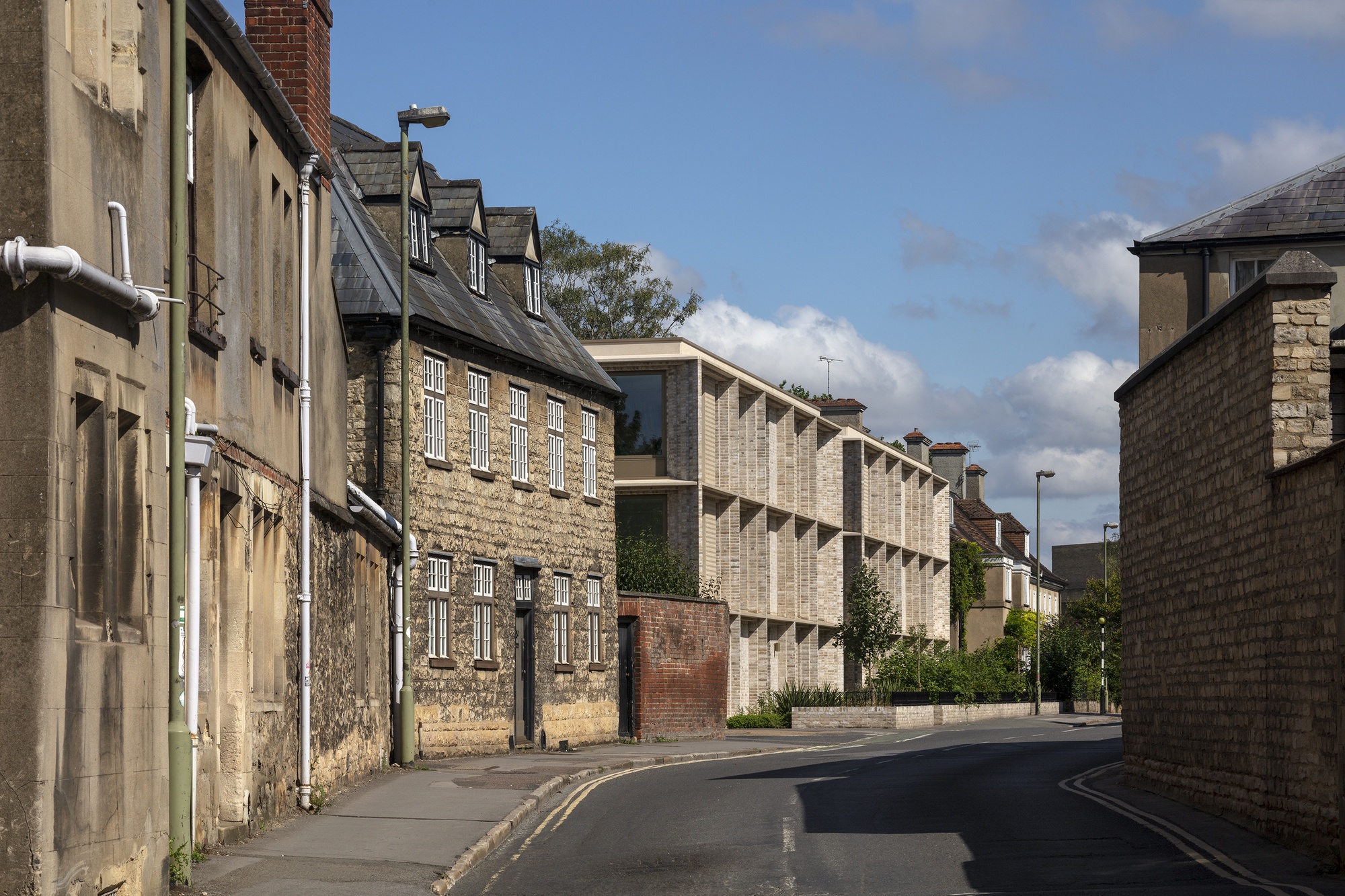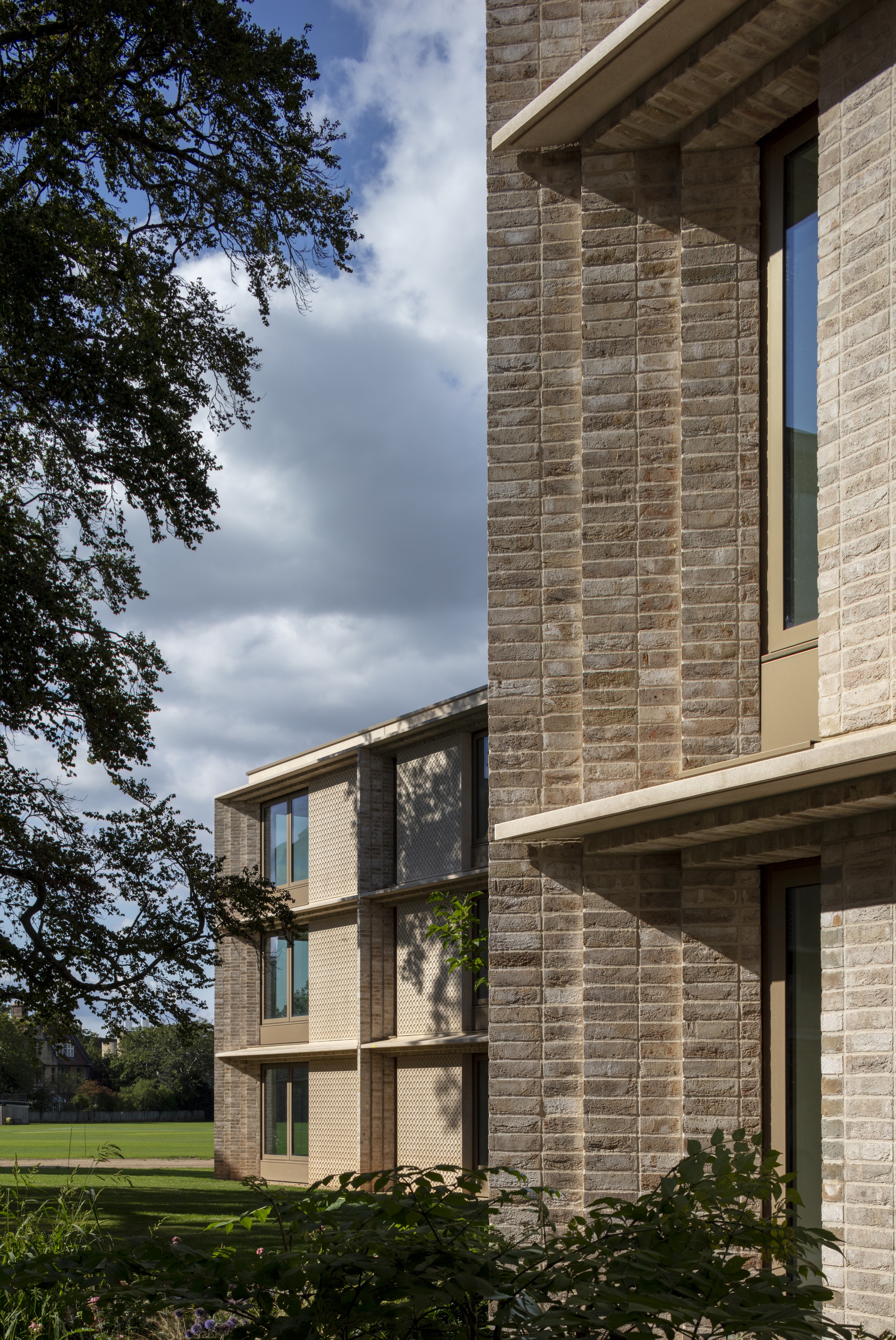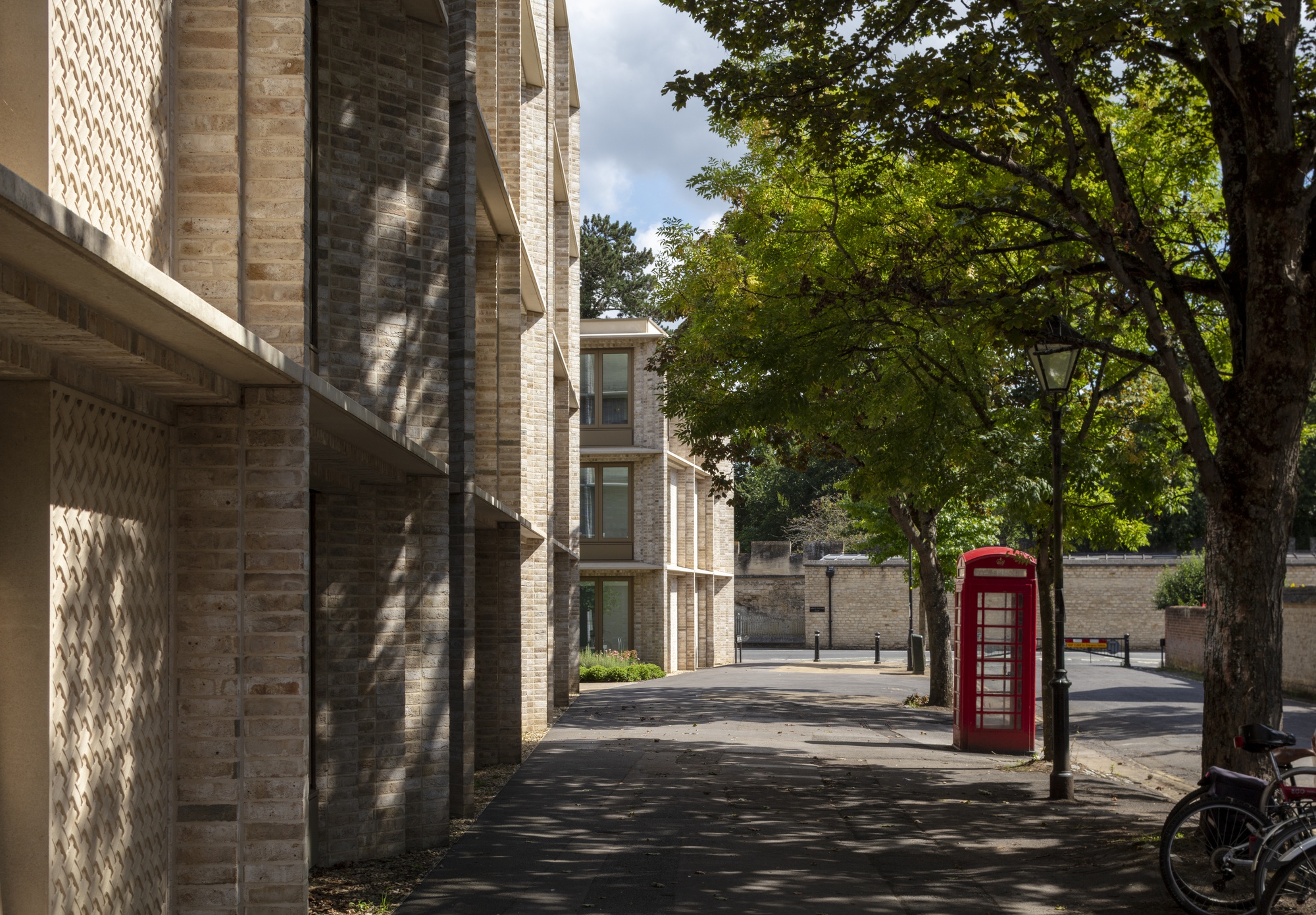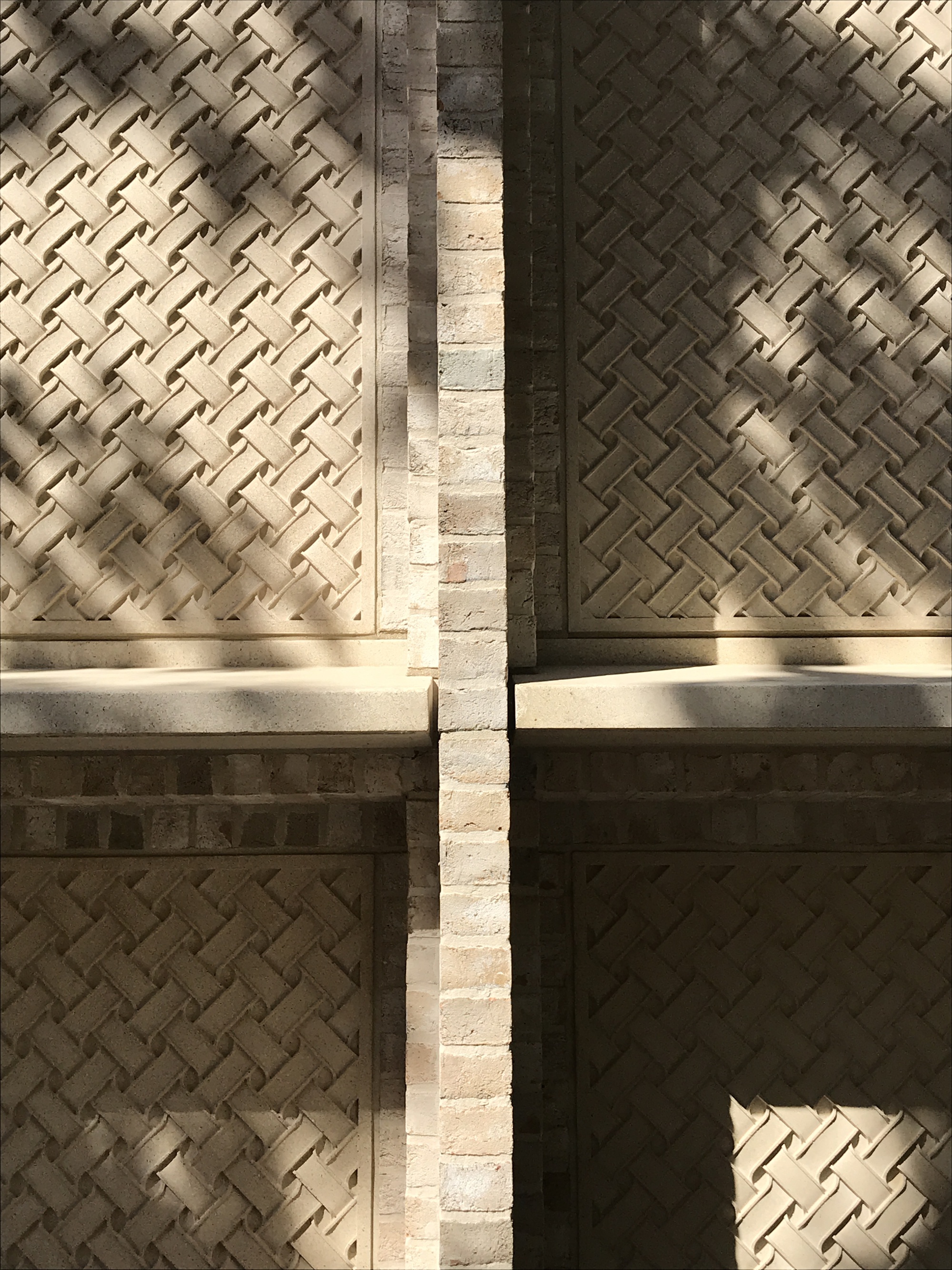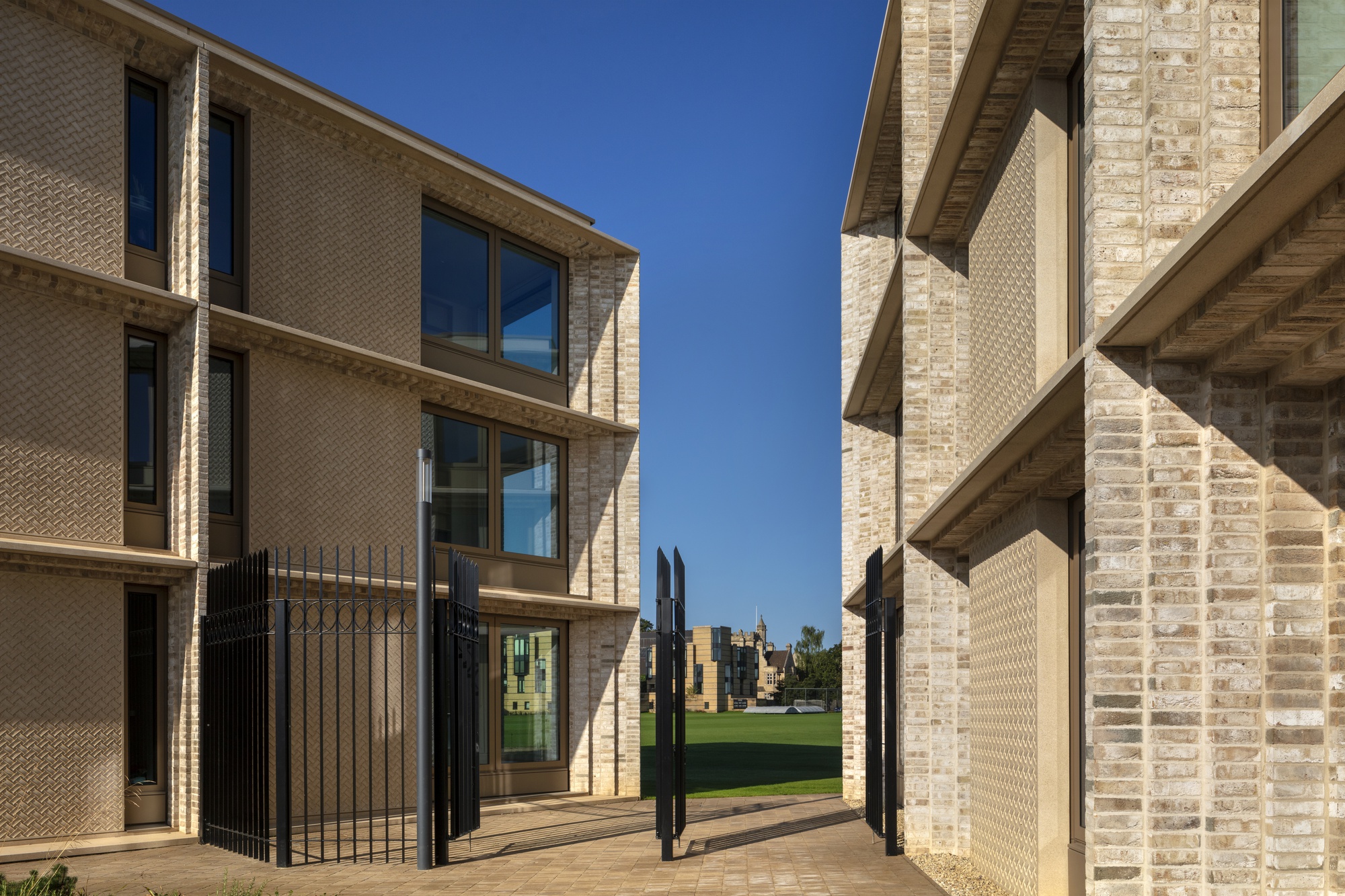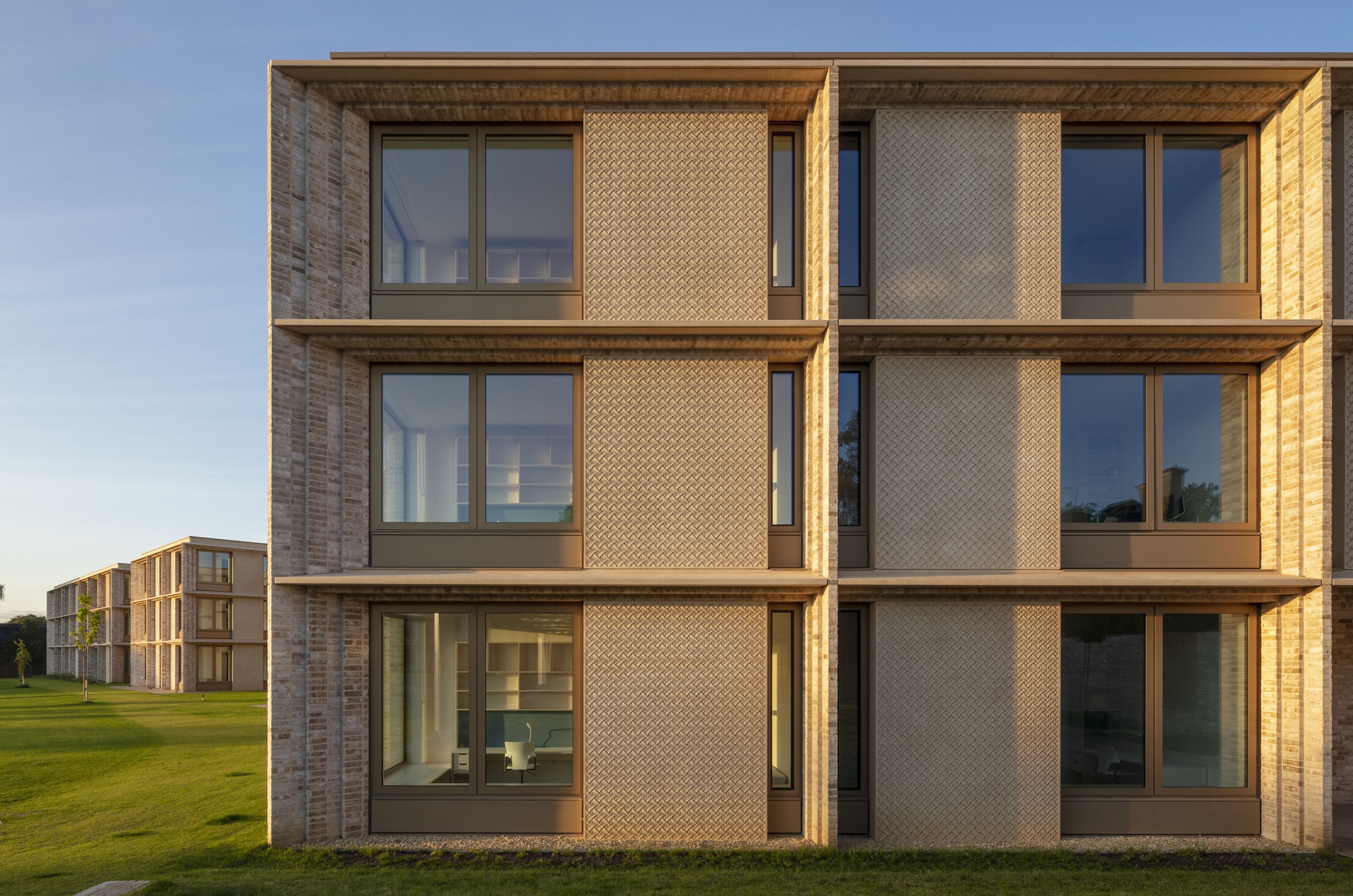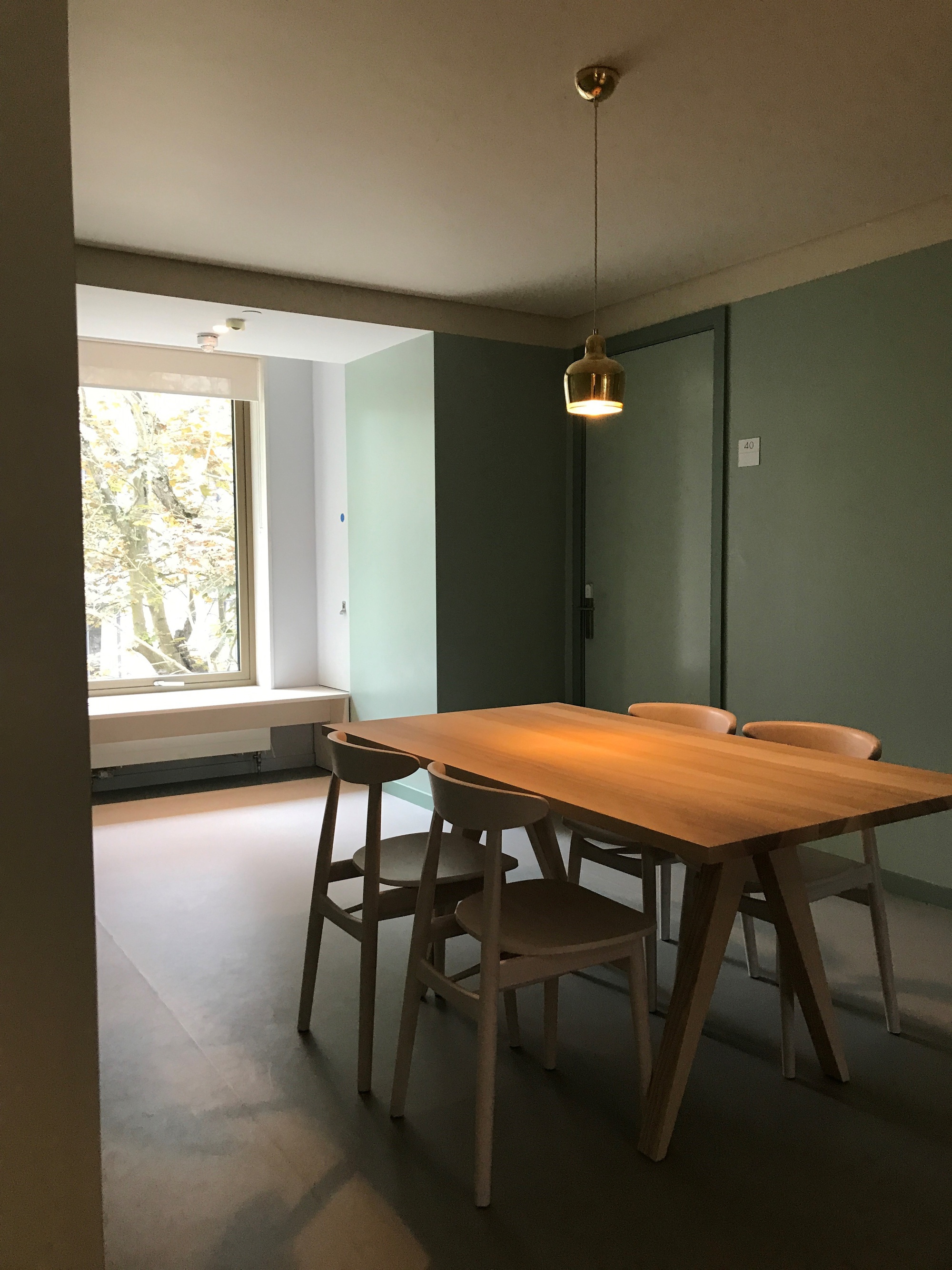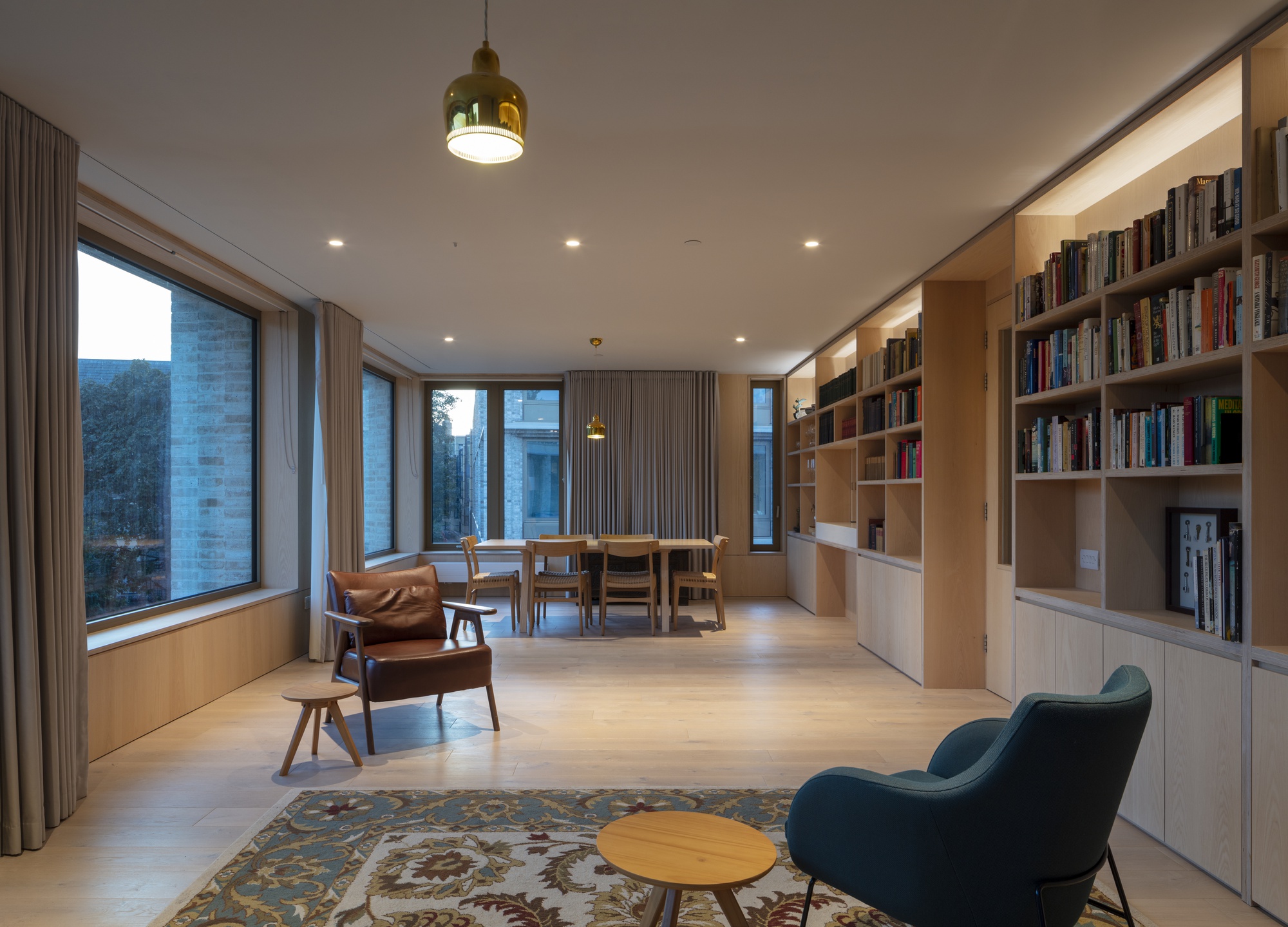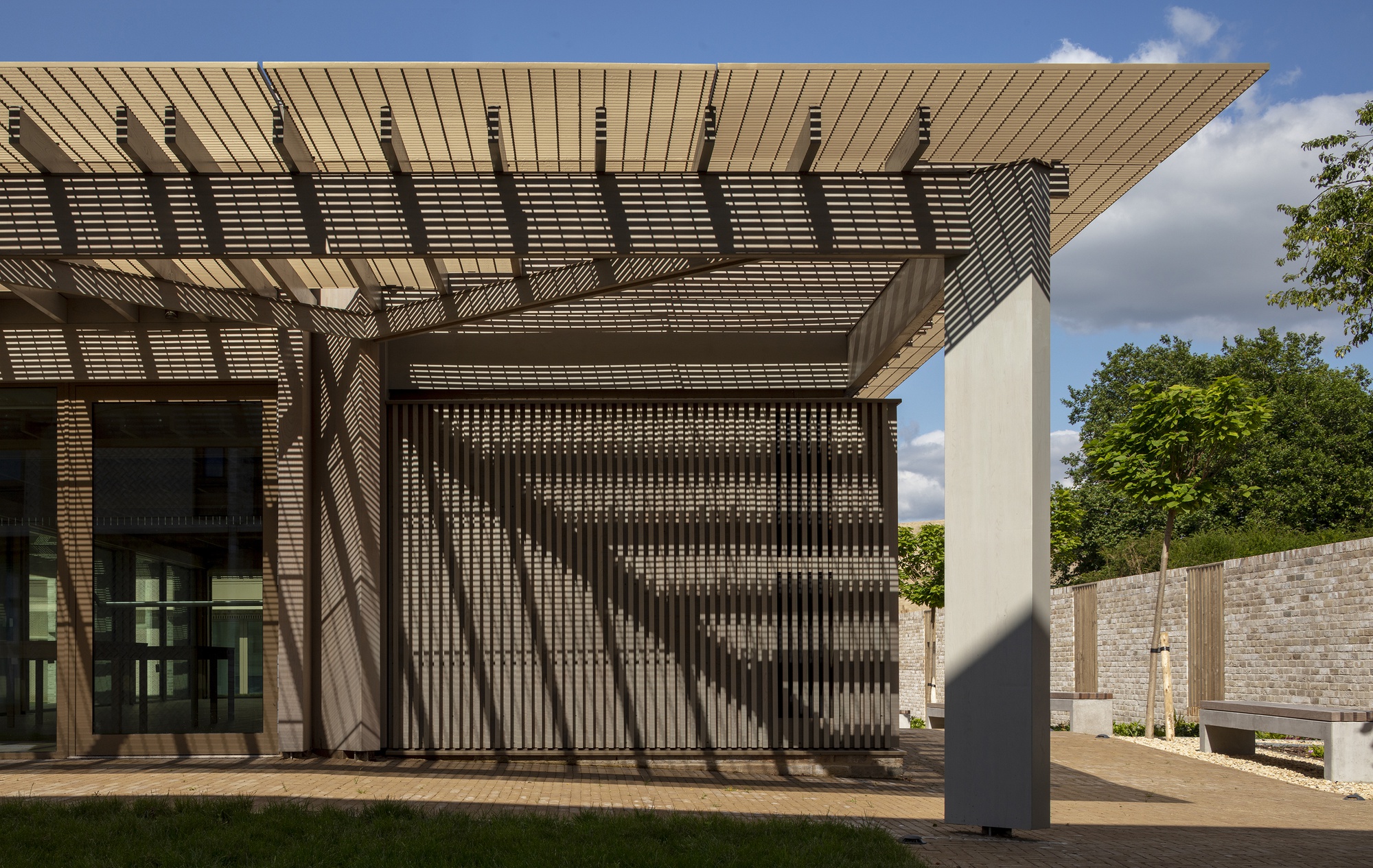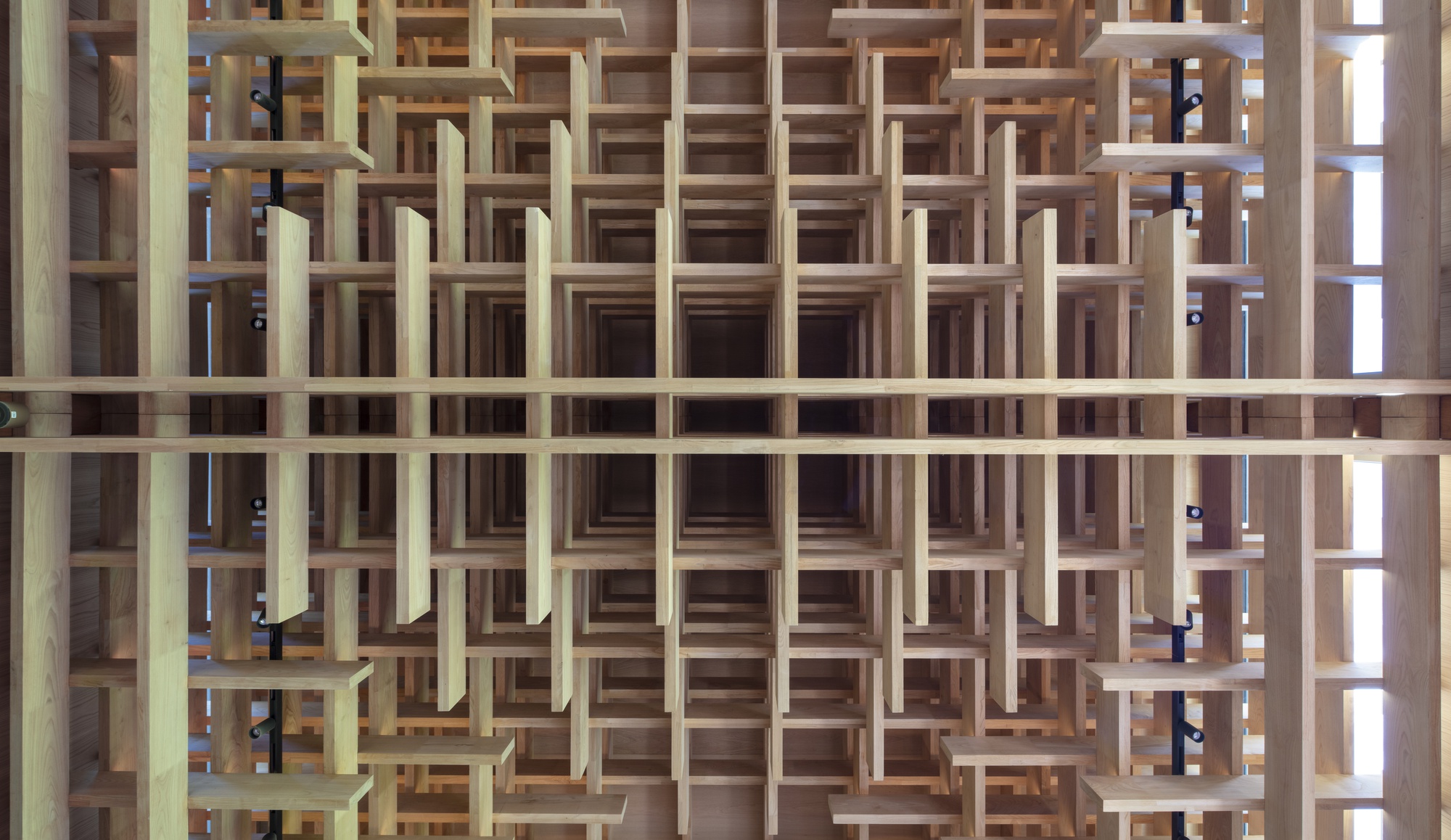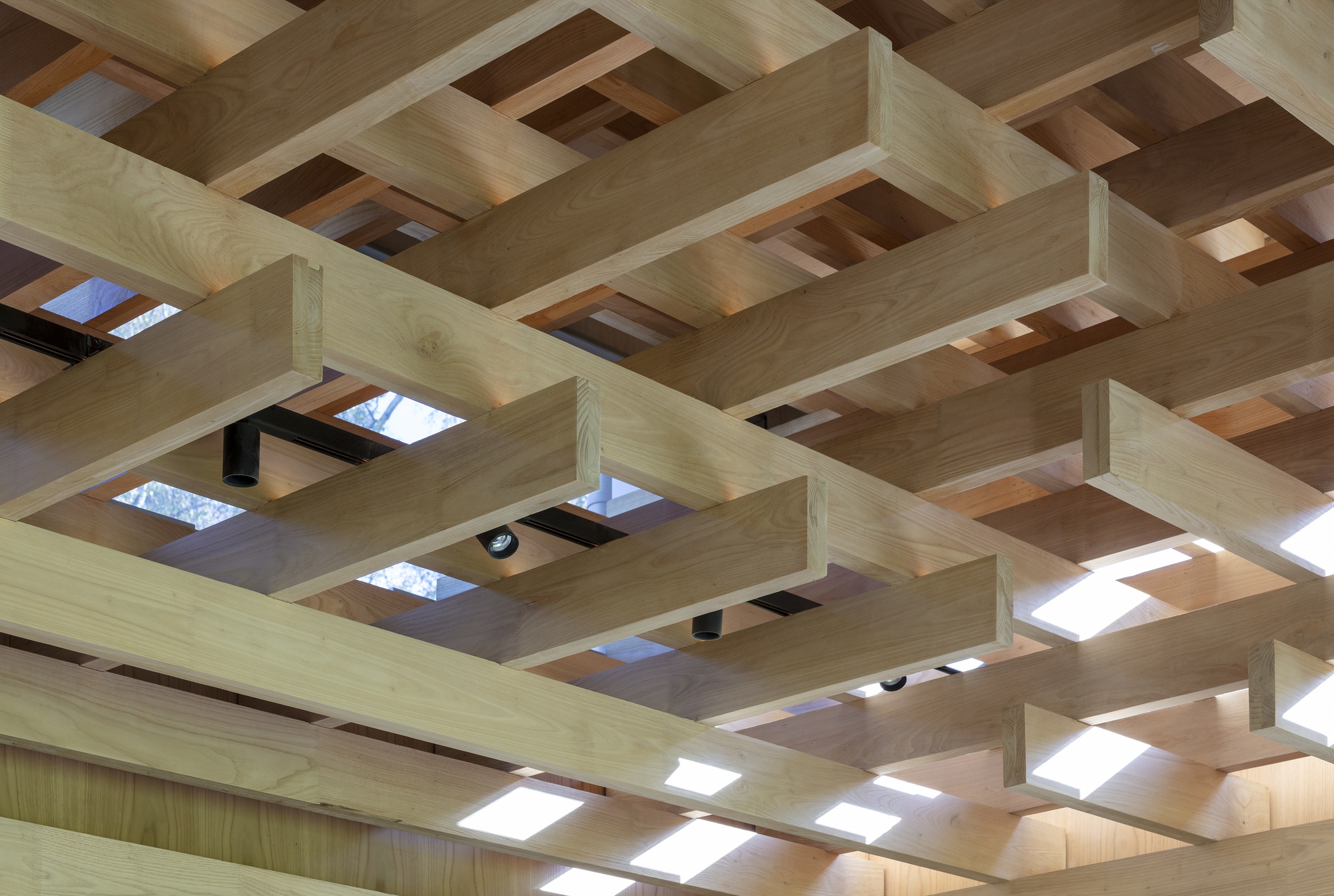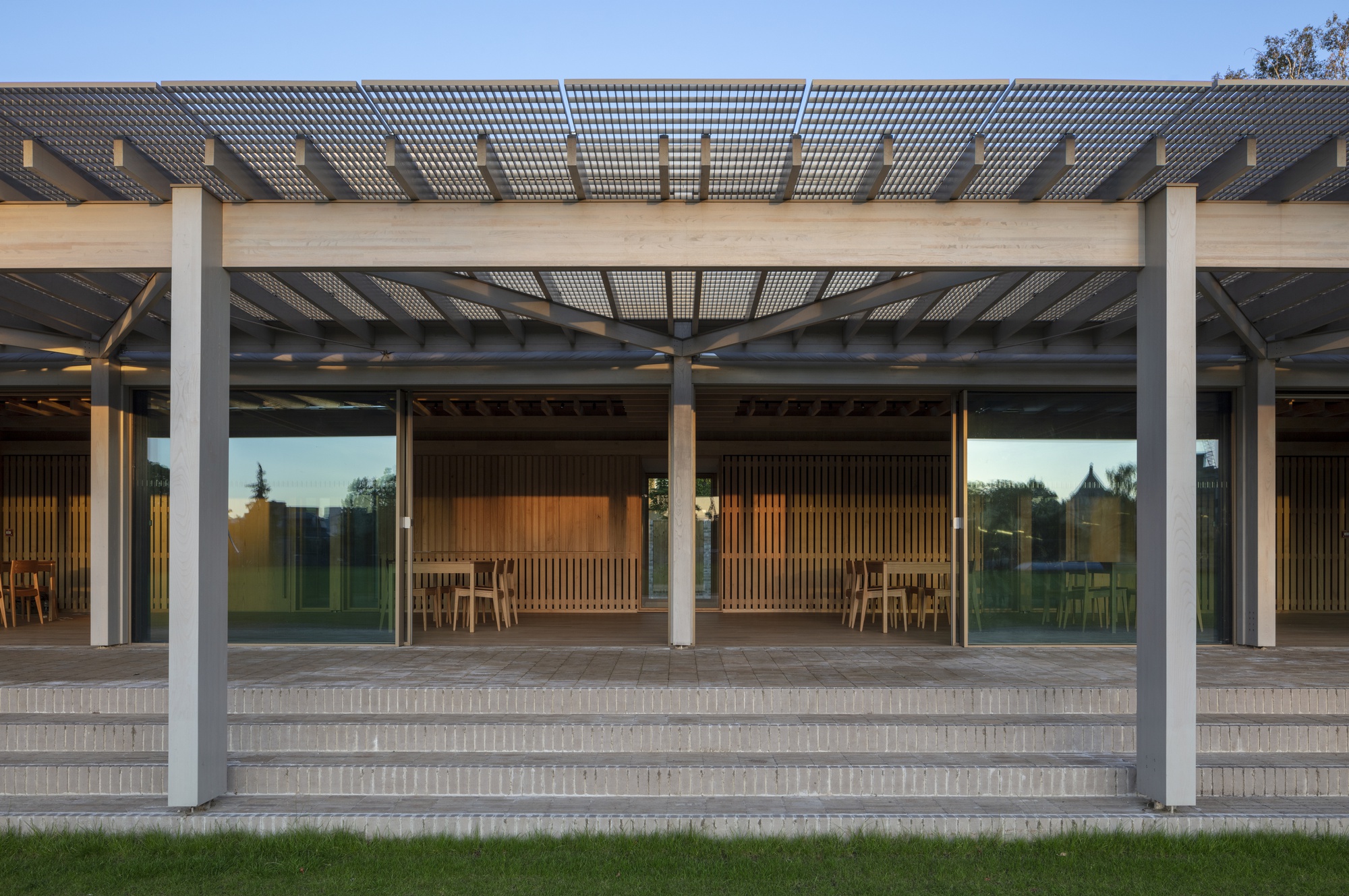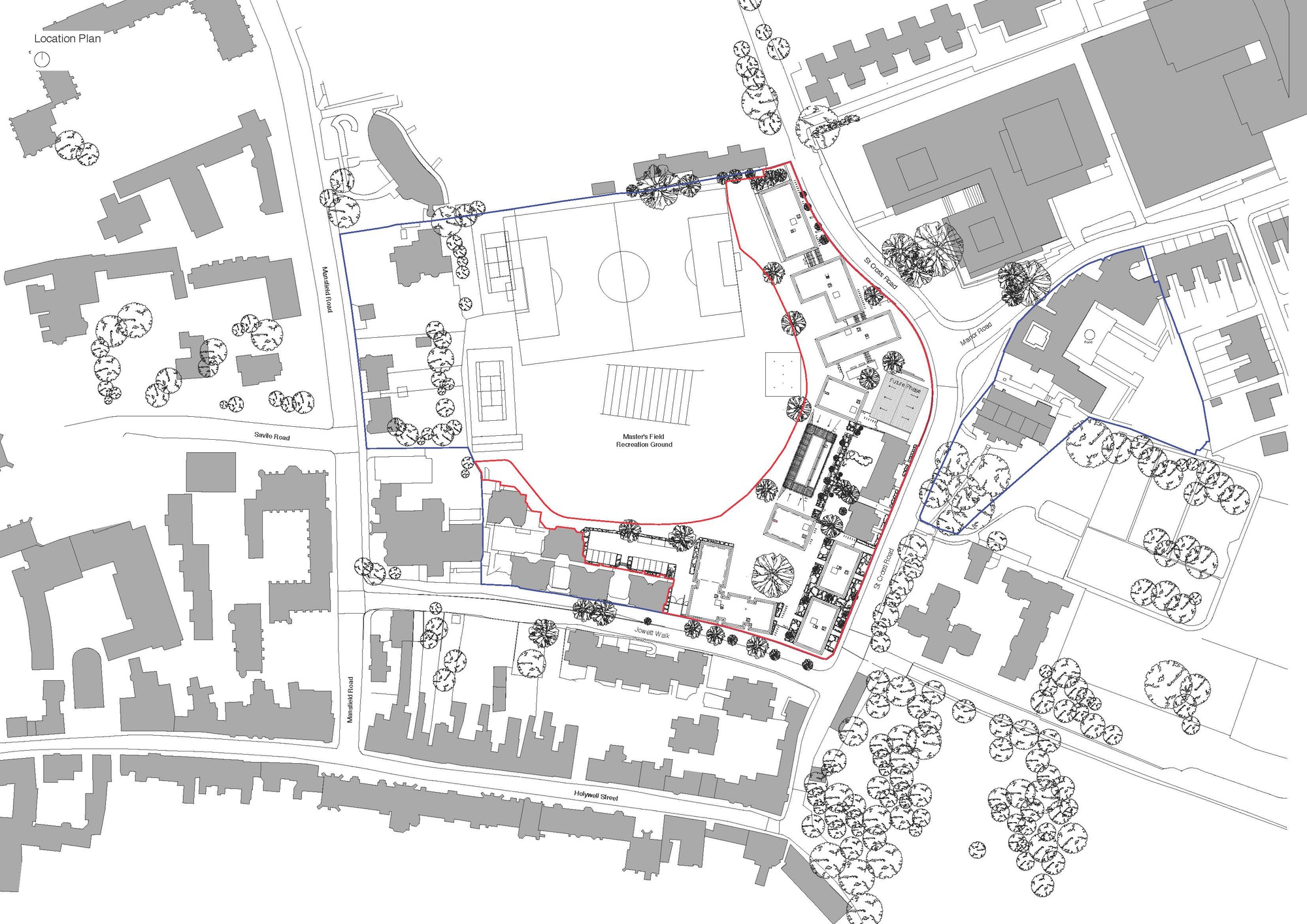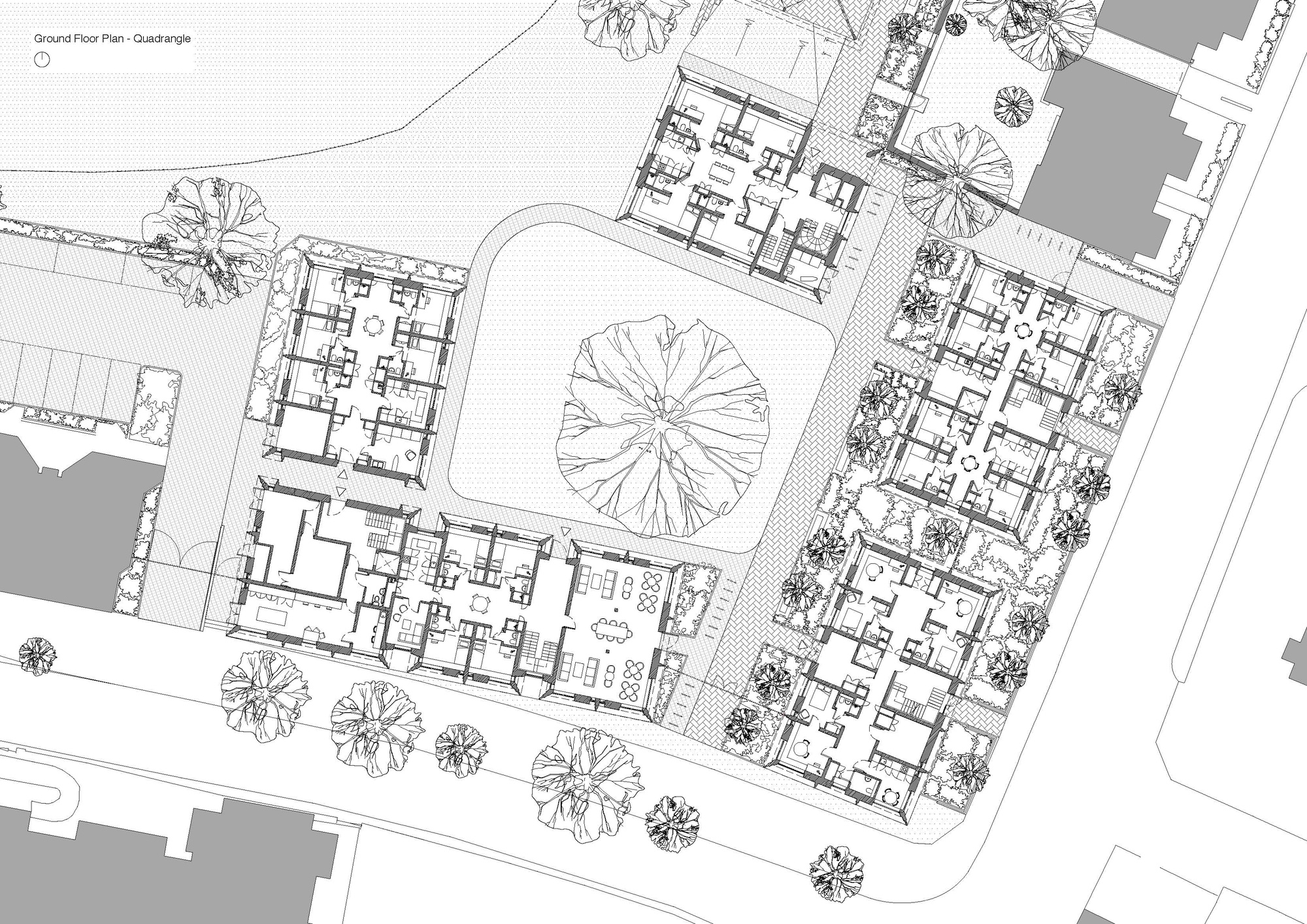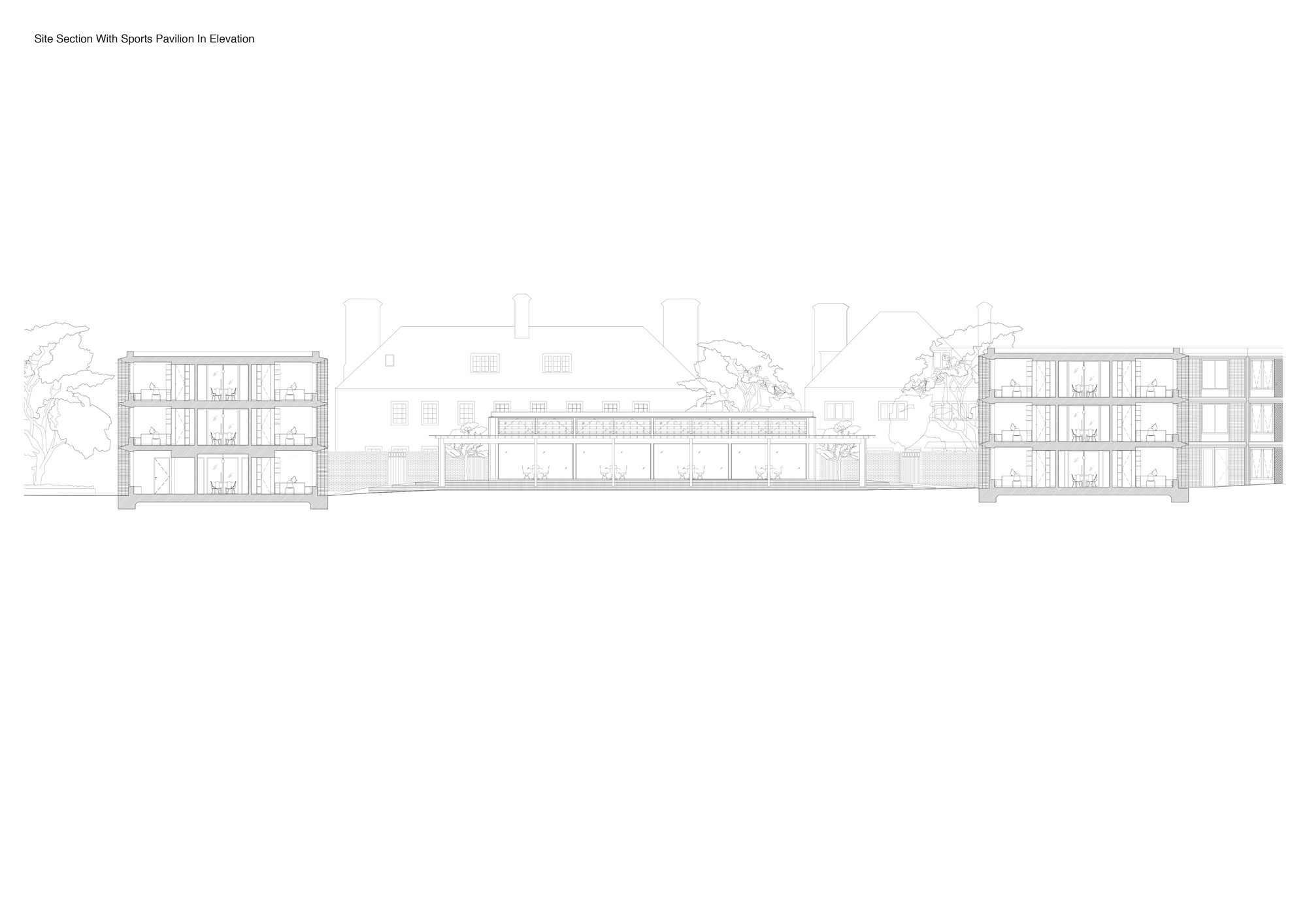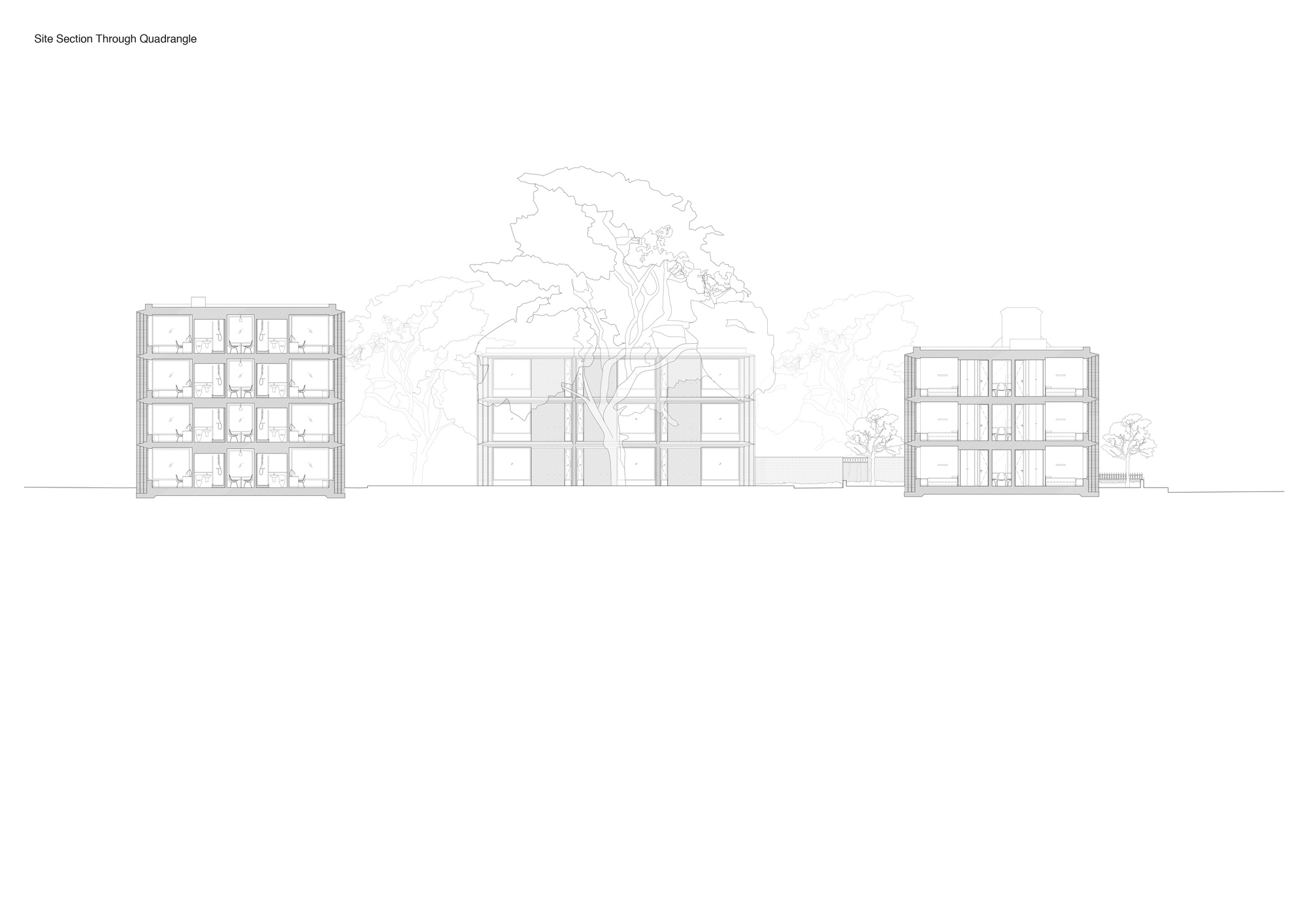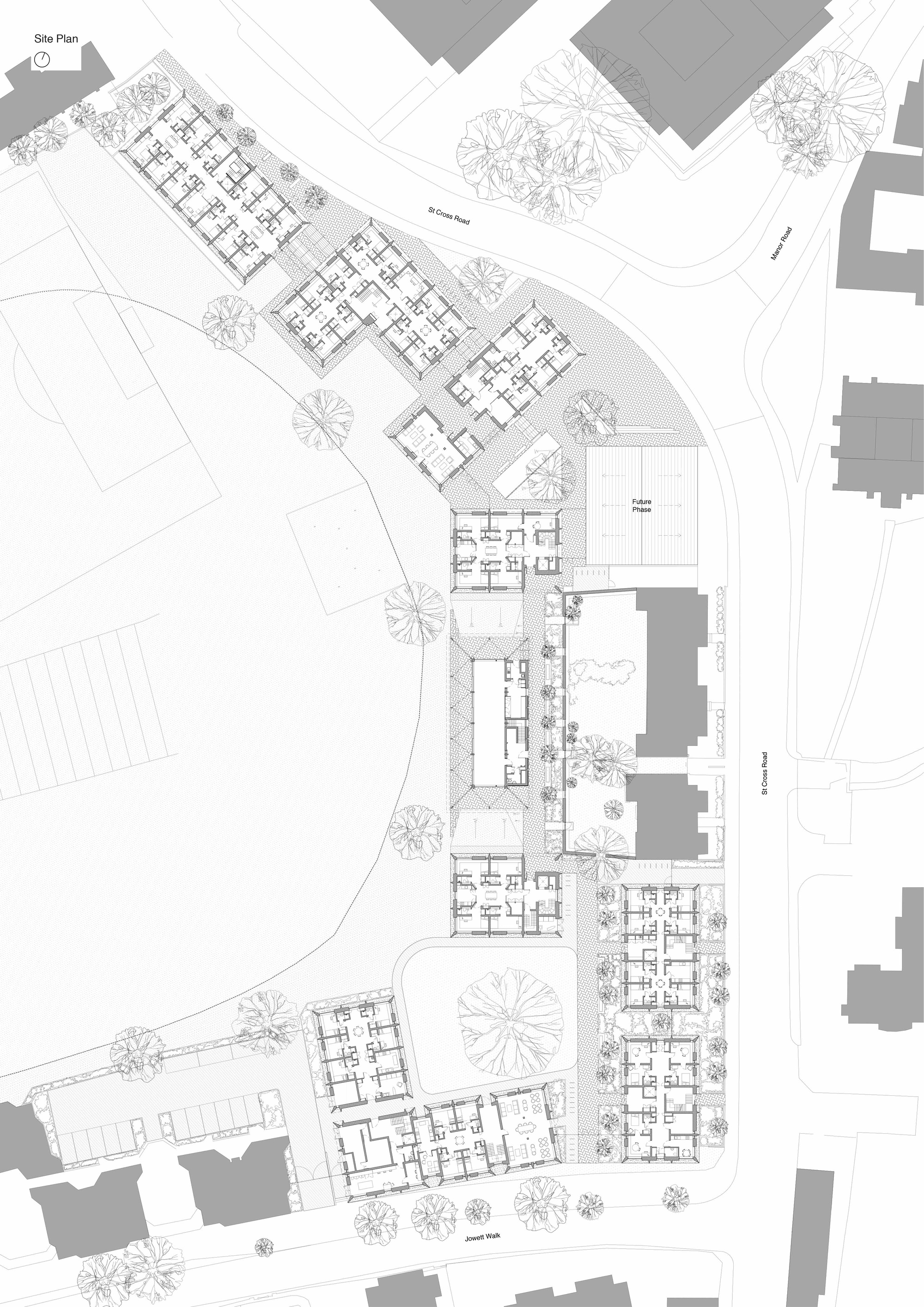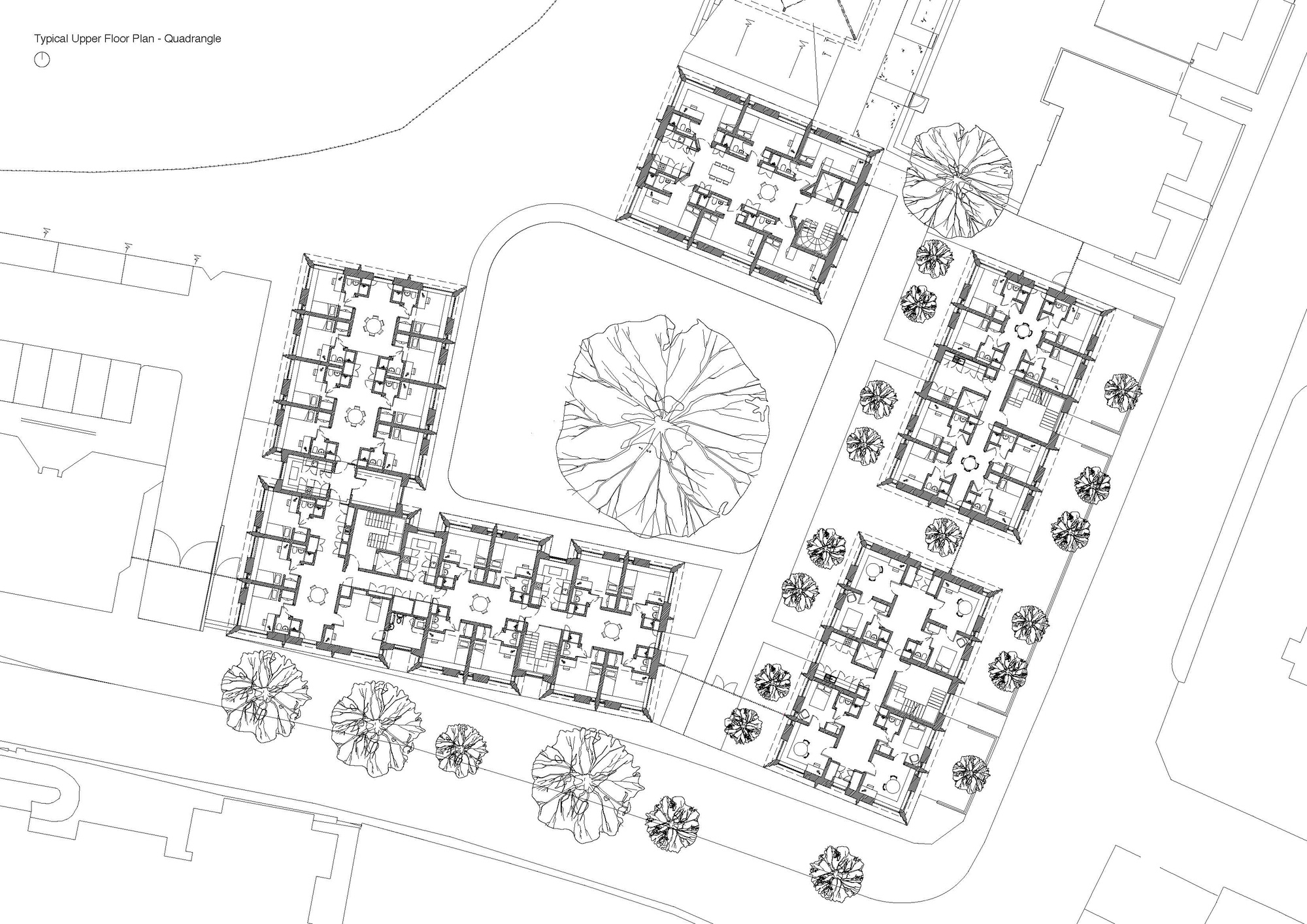Balliol College Master's Field Development
2021
The Master’s Field development is a multi-phased masterplan comprising eight purpose-built student accommodation buildings, a visiting professorial flat and a sports pavilion. The buildings frame a series of new landscapes including quadrangles, tree-lined paths and planted borders. The project enables the College to accommodate its entire undergraduate intake on site.
The low-rise buildings are arranged radially around the eastern curve of a cricket boundary, joining an ensemble of existing student residences designed by McCormack Jamieson Prichard Architects in the late 1990s/early 2000s. The project provides 225 furnished en-suite study bedrooms arranged in clusters, supported by common rooms, laundries, refuse and covered cycle storage areas. A centrally located sports pavilion overlooks the cricket pitch and houses a squash court, changing facilities and a multi-purpose hall.
The College brief sought to create a development in the spirit of a traditional collegiate setting, placing student welfare at its heart. Their ambition was to minimise student isolation and cater for a range of academic vocations within varied bedroom layouts. This ethos underpinned the entire design process. The scheme delivers generous, often dual aspect, rooms with bespoke fitted joinery comprising large desks and generous storage space. Each room opens out to framed views of the landscape.
The arrangement of buildings around the site responds to the pattern of student daily life. The bedrooms are arranged in clusters around localised social spaces that are accessed through glazed stairways linked to shared kitchens and common rooms to allow impromptu social interactions.
The primary spatial arrangement informs the layout of rooms, buildings and ensembles of buildings around quadrangles, streets, and gardens. The buildings frame and animate outdoor gathering spaces but maintain the privacy of the individual in the bedroom as windows are recessed within deep facade reveals.
The masterplan responds to a variety of existing historic buildings and complex site conditions. It mediates a shift in scale and typology at the edge of Oxford’s civic core, from domestic terraced villas towards institutional buildings. Disparate boundary conditions are reconciled by adopting a common architectural language across a series of deliberately repetitive, yet modest scaled buildings. The consistent palette of high-quality materials was selected to complement the surrounding historic context and gaps between buildings were introduced to frame public views into the depth of the site.
